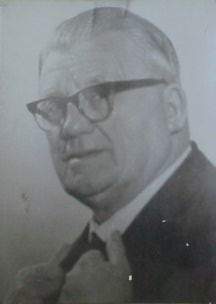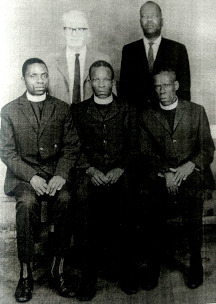Anglican Church
[Source: various]

The Anglican Church in Angola has one of the most remarkable stories in the Anglican Communion. It began in 1925 when Archibald Patterson, an English lay reader from St Clement Toxteth, arrived in the north of Angola, in what is now Uige province. He built a school with the support of local chiefs and in return taught them to read. He made thousands of believers, baptised them and trained many to be evangelists and to use the Book of Common Prayer. By 1961 the church numbered about 70,000 members.
Unlike other colonial powers, Portugal was very slow in granting independence to its colonies. Foreign missions were seen as a threat and Protestants were fiercely persecuted. In 1961 Patterson was expelled. As he left, he was handed a list of his church leaders who had just been executed. Others hid in the bush and yet others fled to Kinshasa (Congo). Those who remained were pastored by Alexander Domingos, who walked enormous distances caring for the scattered believers, often in great danger.
For the next 40 years a prolonged state of war existed. When the War of Independence ended in 1974, Patterson returned to Angola only to witness the church he had founded tear itself to pieces. Exposed to influences from the Reformed Churches outside Angola, many of the leaders had changed. Around 50,000 people formed what is now known as the United Evangelical Reformed Church. Domingos, however, remained firmly Anglican.

As no western governments had supported the Angolan desire for independence, the Soviet Union had seized the opportunity and this left a Communist government (MPLA) in power after independence. As in Mozambique, the South African government tried to destabilise the communists, supporting the rebel organisation called UNITA. And so the people’s suffering continued during a civil war that was to last for 27 years.
In 1985, Domingos came to Selly Oak College in Birmingham to learn English. His announcement that he came from the Anglican Church in Angola was greeted with the astonished response “What Anglican Church in Angola?” He met with USPG saying that he wanted the Church to be recognised as part of the Anglican Communion. On his return to Angola, Domingos made contact with Dinis Sengulane, Bishop of Lebombo, who had also trained in England.
Bishop Dinis visited Angola in 1990, when the Anglicans numbered about 10,000. He ordained Domingos as priest and other leaders as deacons (and a year later as priests). Potential priests were sent to the Anglican seminary in Maputo, Mozambique, including André Soares. Bishop Dinis was asked by the Archbishop of Cape Town to give episcopal oversight and Angola became an Archdeaconry of his diocese. Meanwhile, Bishop Dinis was a major player in brokering the peace settlement in Mozambique, signed in 1992.
With the collapse of the Soviet Union, elections were held in Angola in 1992. UNITA refused to accept the result and the war became more intense. Large numbers of people fled from Uige to Luanda for safety.
Despite the legacy of war, suffering and poverty, the Church continued to grow from its original foundations in Uige and Luanda - on down the coast to Benguela and Lobito and into the central highlands. It also spread in the extreme south in Cunene Province, having been founded by other pioneer missionaries moving north from Namibia.
In 2000 the churches began to cooperate in the search for peace. The Inter-Church Commission for Peace was formed by the Roman Catholics and the Anglican Council of Churches and people began to look to the churches to break the deadlock in the civil war. The collapse of the world diamond market significantly weakened UNITA and the government forces won out. Peace at last came to this troubled country in 2002, but the scars of war are everywhere.
Archdeacon André Soares shepherded the Anglican Church as far as is humanly possible, taking into account the size of the country (three times the size of the UK). His consecration in 2003 as their first bishop marked an enormous step forward for the Anglican Church in Angola.
Angola was now one enormous missionary diocese. There were four districts (Luanda, Uige, Nzadi-a Lukizi and Lukunba Lozi) served by Archdeacons and several missionary areas (Benguela, Cunene/Ondjiva, Huila, Huambo and Cabinda) each served by a priest or cathechist.
Archbishop Rowan William’s visit in March 2007 was a very significant event. He was presented with a beautiful wooden carving of Angola, featuring all churches that are linked with ALMA. Archbishop Rowan has kindly entrusted the gift to ALMA.
In 2021, as part of the creation of the new Anglican Provice of Mozambique and Angola, Angola was split into four new dioceses.